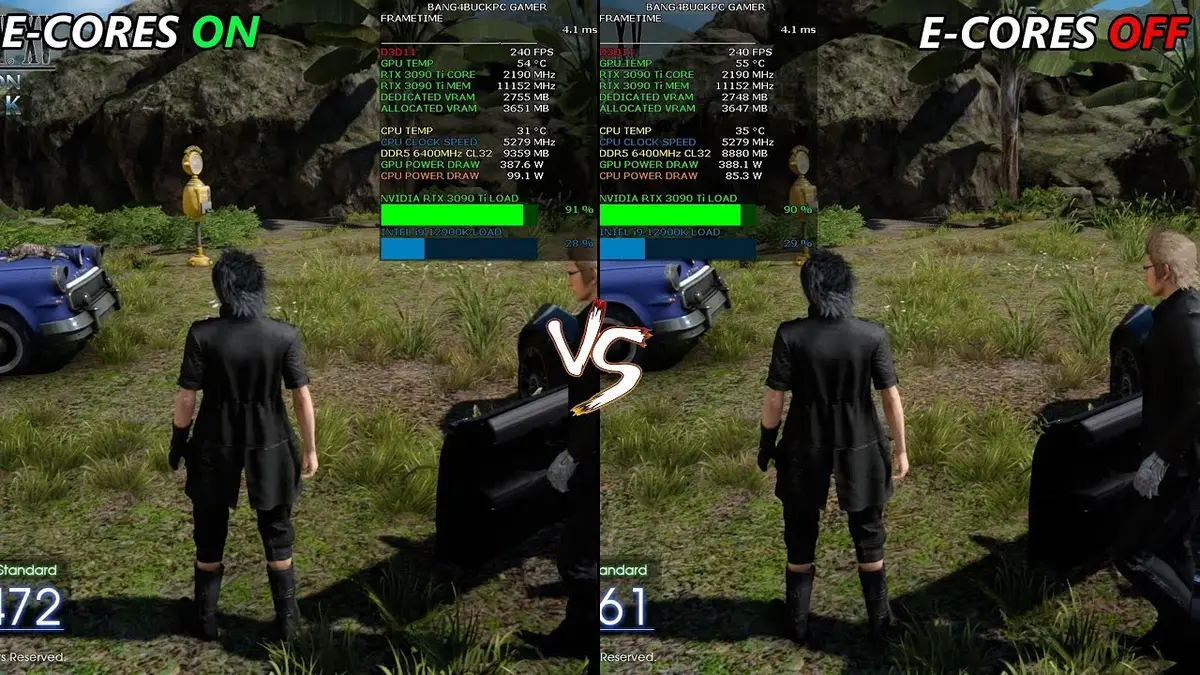It’s been a while since Intel introduced the heterogeneous cores. Lots of users still don’t understand the functionality of E-Cores and how they affect the system performance. And gaming enthusiasts are always searching for clues about E-Cores performance improvements.
Recent data shows that the efficiency CPUs end up diminishing the videogame performance. Instead of helping the computer, they make it even slower when managing videogame files. The E-Cors are simple CPUs with mid-range performance and high efficiency. They are present to help in lightweight activities such as browsing the net. On the other hand, there are P-Cores, the traditional everyday cores that work with heavy tasks such as videogaming, photo editing and such.

Intel E-Cores and the gaming performance are not made for each other in Windows
Microsoft has never experienced with this type of cores before. Although there are several Windows optimized for ARM architecture processors, the implementation is yet incomplete. Windows works in ARM like a sort of emulation because it’s not developed for the architecture itself.
Windows historically works with simple CPUs of one kind of core. Intel has introduced a new design and Microsoft needs to adapt itself because Intel produces the most CPUs around the world. In fact, Windows 11 is just a full update from Microsoft to adapt the operating system to the new E-Cores of Intel. If we think of Windows 11 as a big patch, the optimization is clearly incomplete and that’s the main reason for gaming issues with Intel hardware.
E-Core gaming performance problems
According to Intel spokeperson, the E-Core performance in heavy tasks such as gaming is only complementary to P-Cores. Basically, they are there to help in computational tasks to obtain additional performance. However the results are not that clear yet.
TechPowerUp shows that the game Atlas Fallen works better with the E-Cores disabled. For example, under DirectX 12 with the E-Core active the game runs at 136 FPS. If you disable the E-Core feature the game jumps to 187 FPS. Under Vulkan the situation is similar. The E-Core activation allows the game to run at 152 FPS but it reaches 197 FPS when you turn them off. The tests were made with an Intel Core i9-13900K that consists in 8 P-Cores and 16 E-Cores.
YouTube videos to explain the phenomenon
The videogame youtuber DannyzReviews explores the situation and shows that E-Cores usually worsen the gaming experience. But there are also lots of titles that won’t get affected at all by E-Core activation or disabling. This doesn’t help to confirm or rule out the theory.
Cyberpunk 2077 and Red Dead Redemption 2 are two interesting cases. Both games are heavy and demanding, but a bad optimization of E-Cores makes them very hard to run on E-Coes. But titles like Forza Horizon 5 or Watch Dogs Legion are not affected at all.
Some games may also indicate that E-Cores help, but it all depends on the game and the update and optimization level of the title developers. It’s important to take note of this feature to think about the future of gaming on PC.


Do you have any questions or problems related to the topic of the article? We want to help you.
Leave a comment with your problem or question. We read and respond to all comments, although sometimes it may take a while due to the volume we receive. Additionally, if your question inspires the writing of an article, we will notify you by email when we publish it.
*We moderate comments to avoid spam.
Thank you for enrich our community with your participation!